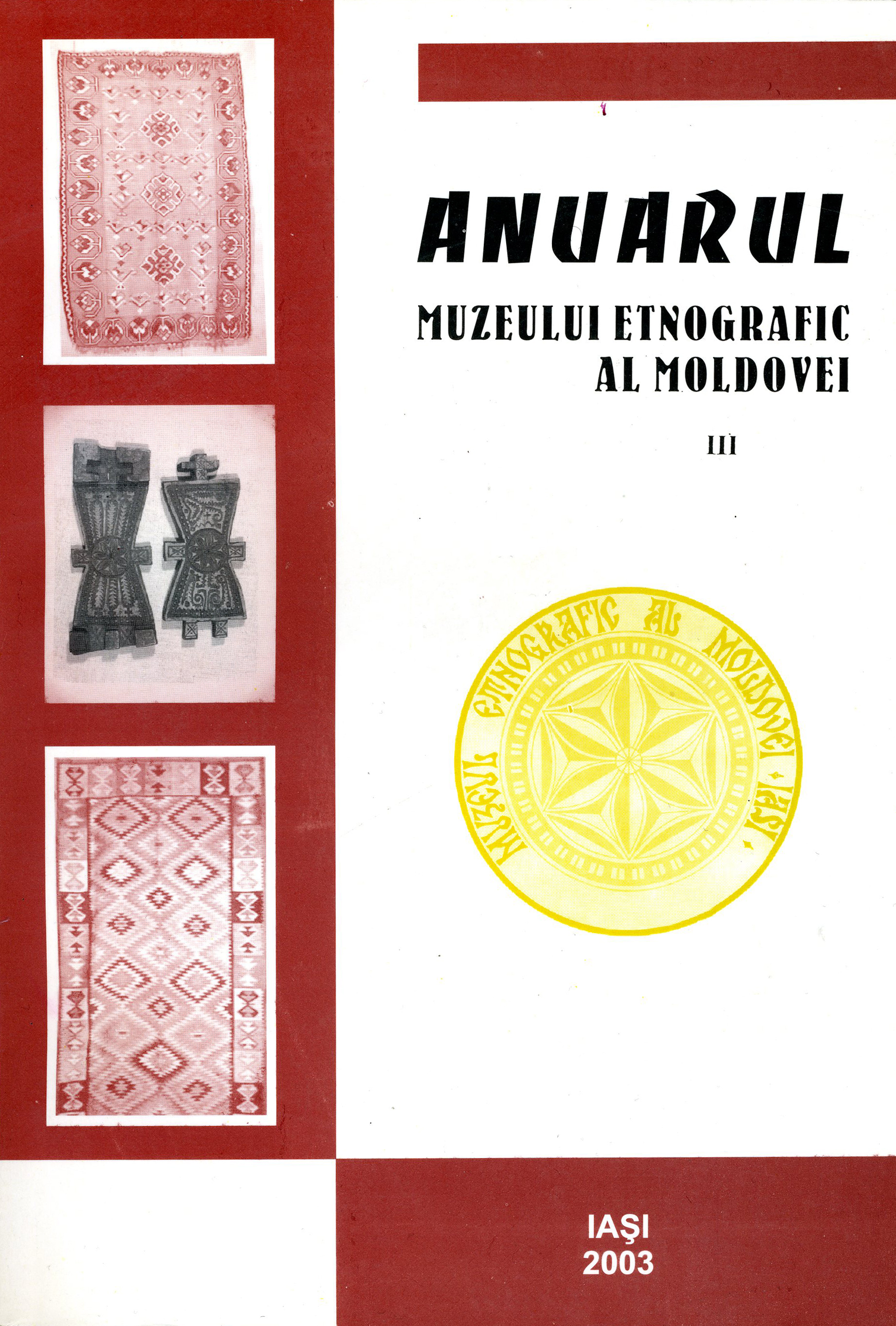Măşti populare moldoveneşti
Moldavian Folk Masks
Author(s): Emilia PAVELSubject(s): Cultural Anthropology / Ethnology
Published by: Editura Palatul Culturii
Keywords: New Year’s folk masks; Ethnographical Museum in Iasi; musical instruments; folk mask plays;
Summary/Abstract: New Year’s folk masks form one of the most important themes presented in „Petru Caraman” Hall from the Ethnographical Museum in Iasi. We have been interested in the study of the folk masks even since the period of the museum organization, starting with 1851, so that on the occasion of its inauguration on February 16th 1958, within the theme „Customs”, the reed goat masks and the old man mask from Popesti-Iasi as well as the bear, the ox, the drum and the whistle – ancient musical instruments used in the folk mask plays – have been exhibited. The work „Masks Plays – Iasi Zone”, Iasi, 1971, revealed the wealth and the variety of the New Year’s folk masks plays from the Central Moldavian Plateau, Iasi zone. The folklore festivals organized almost every year at Iasi intend to stimulate this type of theatrical folk art and the masks represent the present artistic creation, an opportunity for having fun on the occasion of the New Year’s folk feasts. The mask plays from Moldavia, which take place on the occasion of the New Year, are archaic customs whose origins are to be found in the ancient Neolithic and Thraco-Getic agrarian and pastoral rites which evoluated and developed at the same time as the funeral rites and the dead ancestors’ cult. Constituted as retinues of goats, stags, he-goats, rams, oxen, ostriches, storks, horses, accompanied by the animal bells, little bells and whistles sound, the masks wander through the villages even nowadays on the New Year’s Eve and on the New Year’s Day, reminding the bacchonic and dionysiac feasts from the Greco-Roman Antiquity as well as all the ancient celebrations from all over the world which are related to the fertility and fecundity cult.In antiquity, the mask plays were constituted in spring time when the agricultural works began, but the reform of the Roman calendar from 46 B.C. (during Julius Caesar’s reign) fixed the day of the 1st of March and it was then that the mutation of the spring customs in the middle of the winter took place.During the Christian era, these pagan cults remained quite strong. During the 7th century, the bishop of Canterbury decreed that „any person who would disguise in stag or ox for the January carols, that is who would take an animal disguise, would suffer a 3 year interdiction as that practice is demonic”. Petru Caraman asserted that the magic practices related to the dead’s presence on Earth on the occasion of the New Year, when the mask plays took place, were founded on the „belief that during Christmas night the tombs opened and the ghosts and the dead’s spirits went out in the world… The dead’s souls wander during all 12 winter days period, at night. On the 12th Night, their freedom ends. They must go back in their underground shelter. But as they do not want to leave this world by themselves, the custom of ghosts banishing appeared and on the Olt Valley as well in Fagaras zone it is known as bush thrashing”.The dead’s cult as well as the agrarian cults are to be found at other peoples on Earth, too. At the Californian tribes, in Mexico and Peru, in North, Central and South America, in Egypt and Africa, the mask plays take place on the occasion of the fertility celebrations.In the Romanian mythology, the folk mask plays from Moldavia constitute conclusive proofs concerning the existence of the fertility cult and of the dead ancestors’ cult at the Thraco-Getae and the Dacians. Teodor T. Burada, who studied these customs, asserted: „The customs have origins in the ancient Thracic mythology and the auroch and the ox were sacred animals for the Geto-Dacians”.
Journal: Anuarul Muzeului Etnografic al Moldovei
- Issue Year: 2003
- Issue No: 3
- Page Range: 273-290
- Page Count: 18
- Language: Romanian

